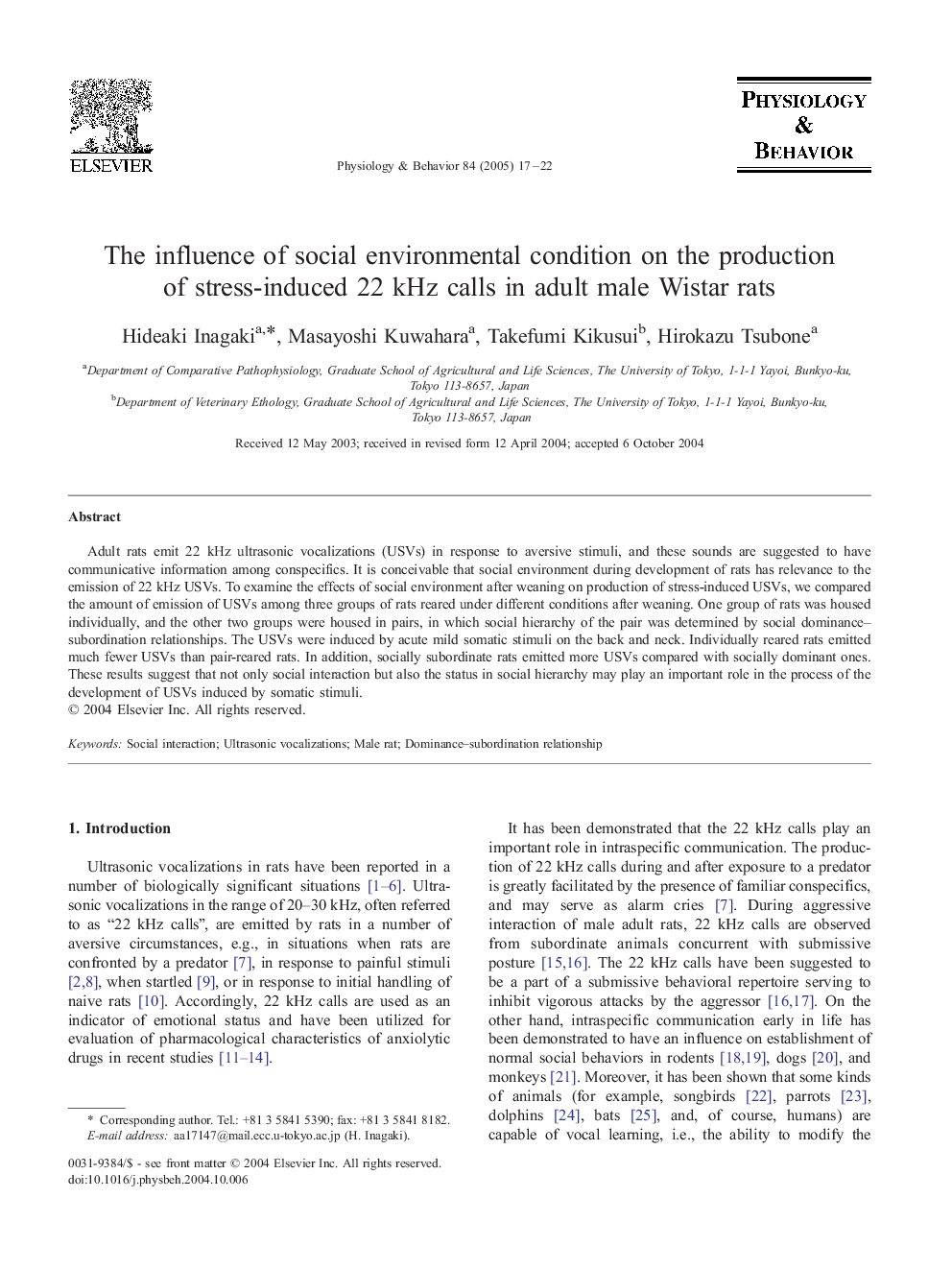| Article ID | Journal | Published Year | Pages | File Type |
|---|---|---|---|---|
| 9149847 | Physiology & Behavior | 2005 | 6 Pages |
Abstract
Adult rats emit 22 kHz ultrasonic vocalizations (USVs) in response to aversive stimuli, and these sounds are suggested to have communicative information among conspecifics. It is conceivable that social environment during development of rats has relevance to the emission of 22 kHz USVs. To examine the effects of social environment after weaning on production of stress-induced USVs, we compared the amount of emission of USVs among three groups of rats reared under different conditions after weaning. One group of rats was housed individually, and the other two groups were housed in pairs, in which social hierarchy of the pair was determined by social dominance-subordination relationships. The USVs were induced by acute mild somatic stimuli on the back and neck. Individually reared rats emitted much fewer USVs than pair-reared rats. In addition, socially subordinate rats emitted more USVs compared with socially dominant ones. These results suggest that not only social interaction but also the status in social hierarchy may play an important role in the process of the development of USVs induced by somatic stimuli.
Related Topics
Life Sciences
Biochemistry, Genetics and Molecular Biology
Physiology
Authors
Hideaki Inagaki, Masayoshi Kuwahara, Takefumi Kikusui, Hirokazu Tsubone,
